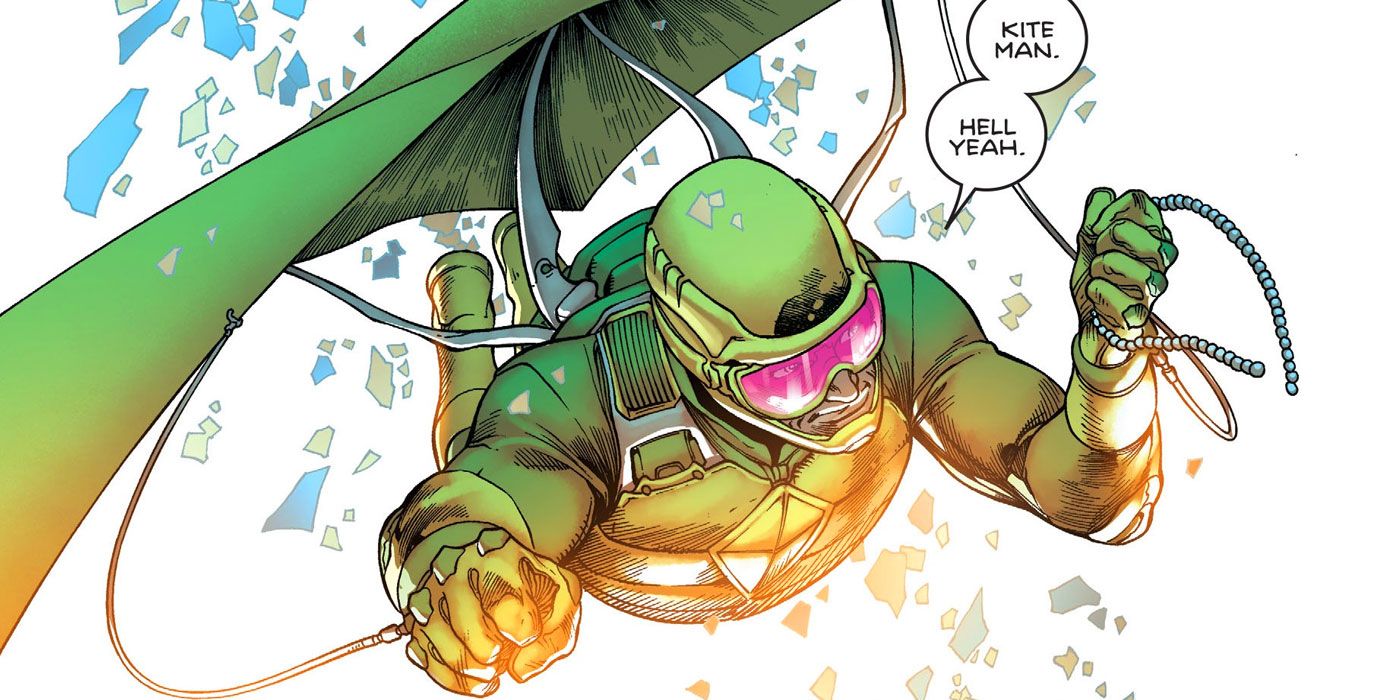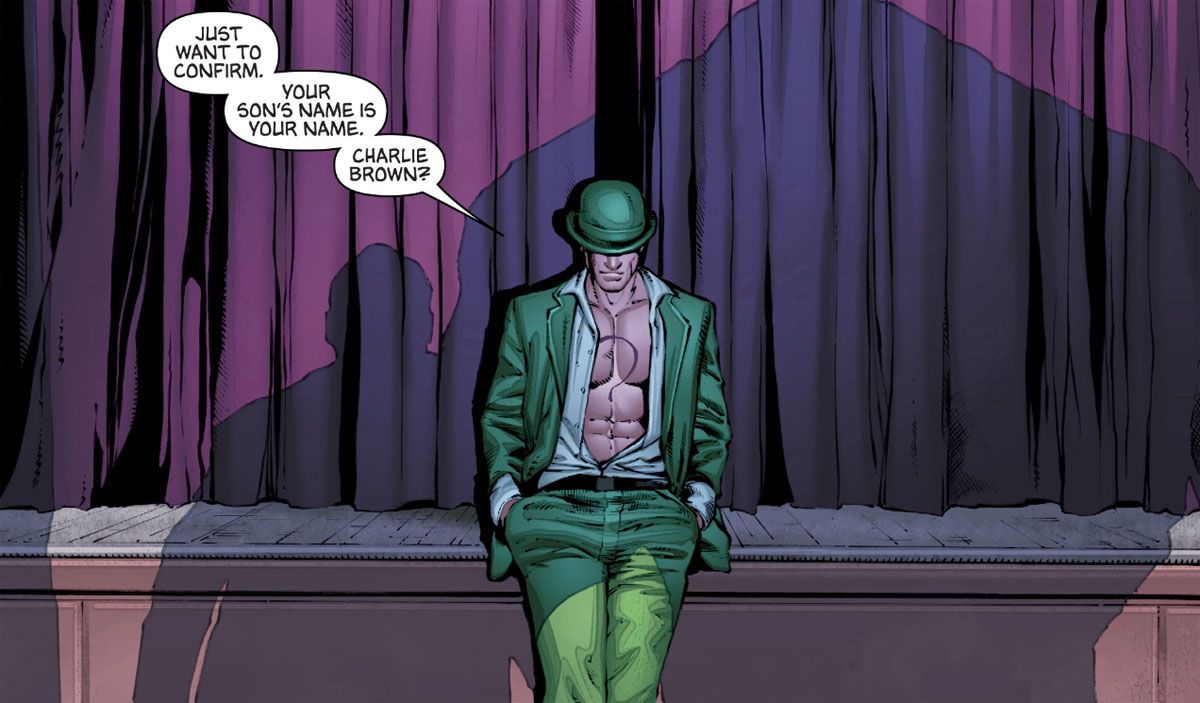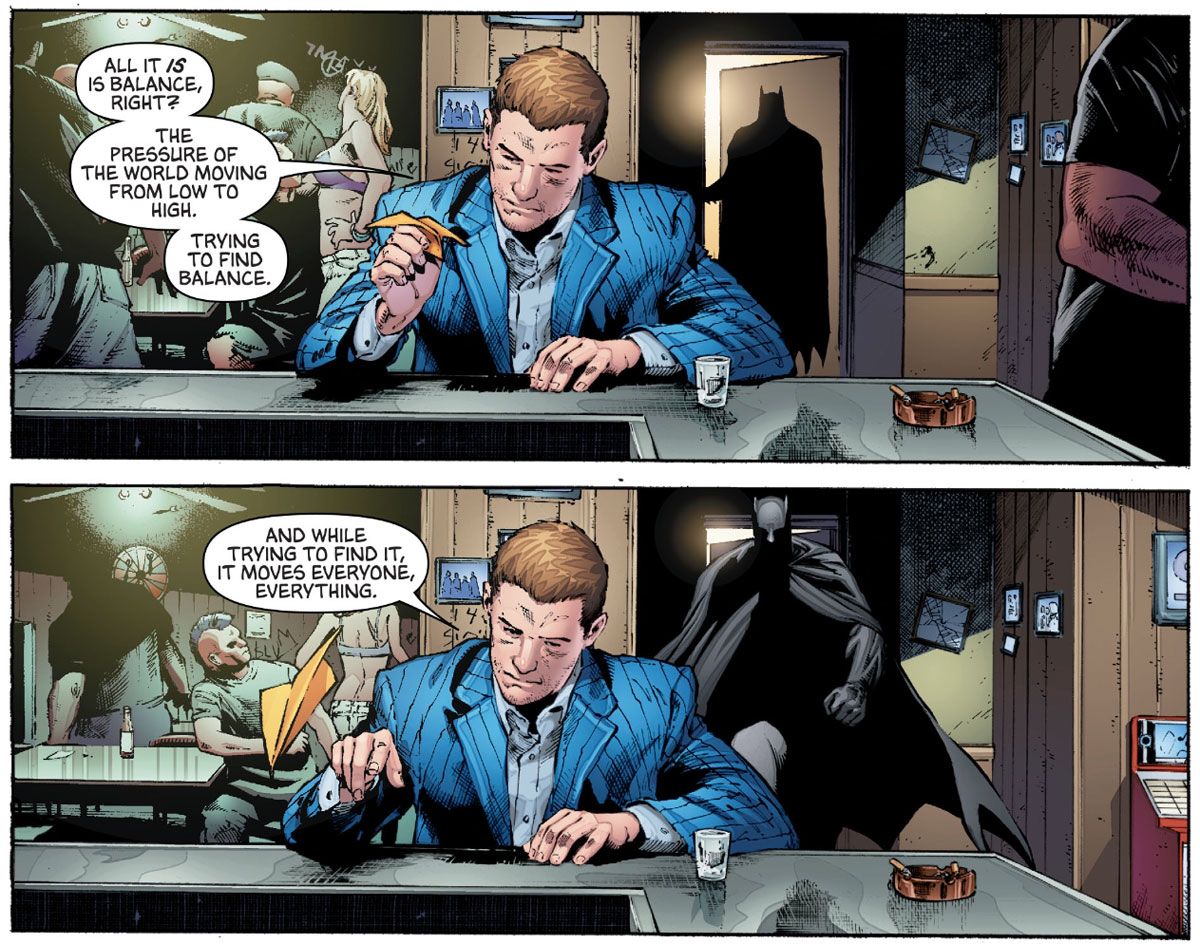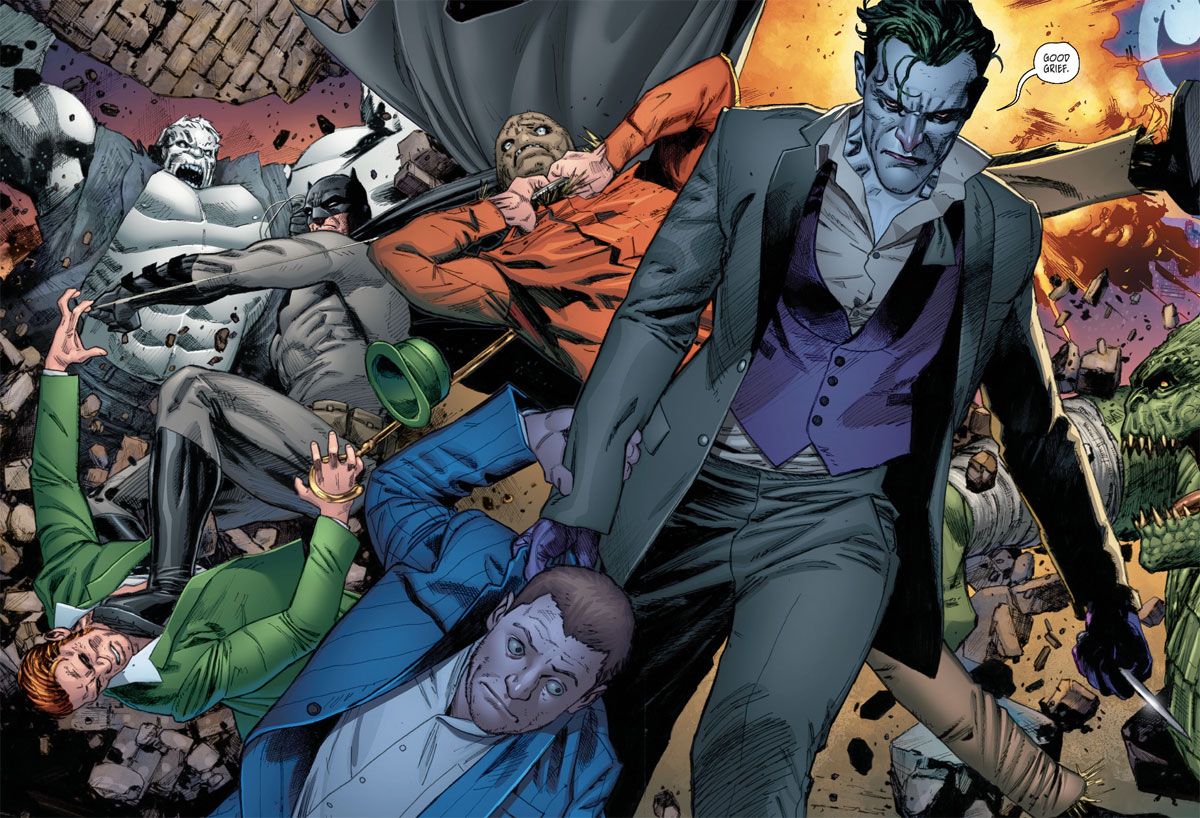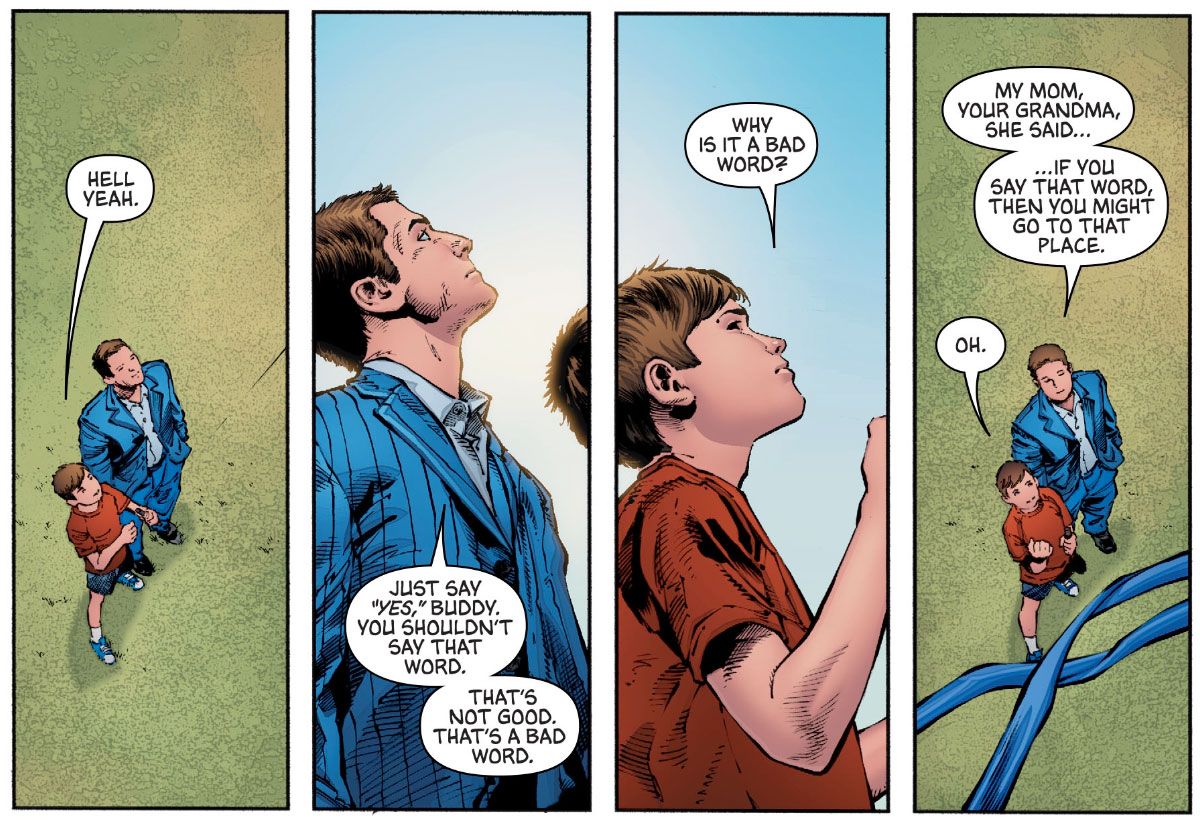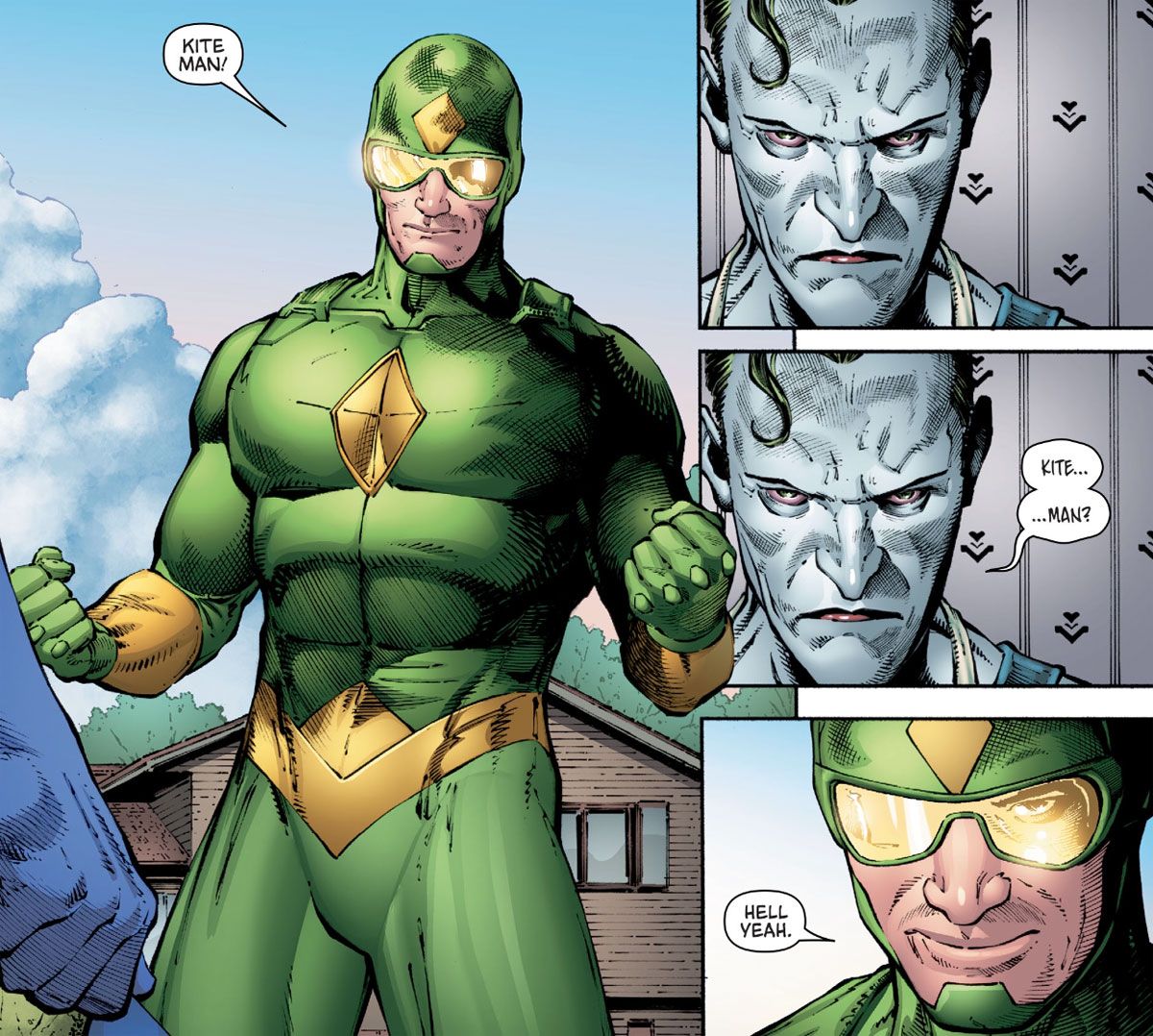SPOILER WARNING: The following article contains major spoilers for Batman #27, by Tom King and Clay Mann, on sale now.
One of the most unexpected breakaway fan-favorite characters of writer Tom King’s run on Rebirth’s main Batman title has been the camp-ladened, Silver Age D-Lister Kite Man, aka Charles “Chuck” Brown. No, that’s not a joke; Kite Man’s honest-to-God civilian name really is Charlie Brown.
From day one, King has been weaving Kite Man into the background of his version of Gotham City with what started relatively self explanatory joke -- Kite Man, hang gliding through the Gotham skyline, mumbling his own name and “Hell yeah” to himself. Since then, “Hell yeah, Kite Man” has been one of the book’s most off-kilter and charming recurring gags.
Though he's not been a major player in King's storyline -- I mean, come on, he’s Kite Man -- over the course of 26 issues, he’s been getting around and, apparently, keeping an ear to the ground. More often than not, the ill-fortuned villain's cameos have involved onBruce tracking him down to get some information, swooping in to ruin poor Chuck’s undoubtedly harebrained heist schemes in order to terrorize him for a few minutes before he cracks like an egg and spill his guts.
RELATED: Batman Rebirth, Year One: A Look At Tom King’s Bat-Epic, So Far
The repeat interrogations never seemed to get Chuck down, though. Sometimes he’d even mumble his catchphrase as he fights to catch his breathe after being pummeled on a roof top.
Hell yeah, indeed.
The current Batman story arc, “The War of Jokes and Riddles,” is actually a flashback to the pre-Rebirth era of Batman, taking place in a semi-hazy period of the Dark Knight's career set shortly after Scott Snyder and Greg Capullo’s “Zero Year” story, detailing an important adventure from the earliest days of Batman’s tenure as Gotham’s protector. As you can probably guess by the title, it’s a feature for both The Joker and The Riddler, who have found themselves in a grudge match that blankets the city and pulls just about every two-bit criminal and their cousins into the fray.
That’s where Chuck comes in.
We learn in issue #27 (illustrated by Clay Mann) that prior to actually adopting his villainous moniker, Chuck was a pretty normal (if slightly shady) guy. He “studied wind” in college, or more specifically, aerodynamics, because he was interested in the “balance” of it all. His expertise -- strangely enough -- would eventually lead him to being roped in with The Joker’s crew. According to Chuck, he was one of four people who helped design the Jokermobile -- and the only one to survive the experience. (The other three have yet to be named, but knowing Tom King’s love of seeding plots, they’ll probably come up before the War is over.)
RELATED: How Gotham Girl (And Tom King) Saved Batman
Unfortunately, however innocent designing a clown car might’ve been, Chuck’s connection landed him in hot water with not only The Riddler’s crew, but Batman himself. This, of course, is pretty unfortunate for a number of reasons, chief among them being that Chuck’s got a son -- Charles Brown Jr. (he actually does go by Charlie.) And anyone who’s been around the block a time or two in Gotham knows that when you’re mixed up with masks, family is the first thing to get put in the crossfire.
You can probably guess where this is going.
It’s a surprisingly dark twist on an otherwise gag villain, as Chuck’s poor son is killed the Riddler, who coated his toy kite’s string with poison. In the aftermath of his child's death, Chuck himself is set up to be a suicide bomb attack for Batman by the Joker. The bombs, almost predictably, turn out to be the punchline of a joke rather than the real thing, but it’s such a traumatic sequence of events that Chuck finds himself unable to cope.
So, naturally, he does what people in Gotham City tend to do when they’re confronted with trauma and loss -- he decides to put his hobbies and interests to better (worse?) use. Inspired by his aerodynamic proficiency and his son's favorite toy, Chuck drafts up his very first Kite Man costume. We even learn that his “Hell yeah” catchphrase is in honor of Charlie, a light curse that Chuck had actually warned his son not to say just days before his death.
It's a bit of a shock for an otherwise comedic villain, to be sure, but it’s actually, strangely, not one that compromises the tone of the story. The biggest recurring theme of “The War of Jokes and Riddles” is, well, jokes and riddles. The sort of brutal, murderous jokes and riddles that people like The Joker and The Riddler trade in, of course, but jokes and riddles all the same. There’s a sort of poetry in the reveal that Rebirth Batman's longest running gag is the product of one of those horrifying jokes. It’s the sort of bleak, uncomfortable symmetry that The Joker is willing to turn Gotham inside out in order to expose.
RELATED: Tom King’s Impact on Batman Is Defined As A Turning Point Looms
While we can be certain that Kite Man will glide through the rest of the War relatively unscathed -- he has to become the lovable D-lister we know him as in the present day, after all -- his future beyond that is wide open. Maybe one day we’ll even see some kite-themed vengeance raining down from the sky towards the likes of The Riddler, or maybe even The Joker. Though it once would have been unthinkable, it certainly doesn’t seem all that far outside the realm of possibility that Kite Man will one day actually get his due. This issue's story was billed as "Part One," after all, indicating King has more to tell.
Hell yeah.

